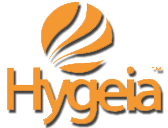
October is Breast Cancer Awareness Month, a time to raise awareness about this serious disease that has impacted nearly all of our lives in one way or another. Breastfeeding has been linked to a reduced risk of breast cancer, making it an important topic for women of all ages, but there is more to know about early detection and risk factors.
What is breast cancer?
Breast cancer is a disease that occurs when cells in the breast grow abnormally and divide uncontrollably. It can affect both men and women, but it is most common in women. It can occur at any age but it is seen in women above the age of 40 years most frequently.
Do you know the signs and symptoms?
Early detection is key to successful treatment of breast cancer. If you notice any of the following changes in your breasts, see your doctor:
- A lump or thickening in the breast or underarm
- A change in the size, shape, or texture of the breast
- Nipple discharge (other than breast milk)
- Skin changes on the breast, such as dimpling, puckering, or redness
- Pain in the breast
What are the risk factors?
Several factors can increase your risk of developing breast cancer, including:
- Age: The risk of breast cancer increases with age
- Family history: Having a close relative with breast cancer can increase your risk.
- Genetics: Certain genetic mutations, such as BRCA1 and BRCA2, can increase your risk.
- Hormone therapy: Taking hormone replacement therapy after menopause can increase your risk.
- Breast lumps: Women who have had some type of non-cancerous breast lumps are more likely to develop cancer later on.
- Dense breast tissue: Women with dense breast tissue have a higher chance of developing breast cancer.
- Obesity: Being overweight or obese can increase your risk.
- Diet & Lifestyle choices: Women who smoke, eat a high-fat diet, and drink alcohol are more at risk of developing breast cancer.
- Radiation exposure: Frequent exposure to X-rays and CT scans may raise a woman’s chance of developing breast cancer.
Breastfeeding and Breast Cancer
Studies have shown that breastfeeding can reduce your risk of developing breast cancer. The longer you breastfeed, the greater the protection.
At Hygeia Health, we believe in the power of breastfeeding. Our high-quality breast pumps are designed to make pumping easier and more efficient, allowing you to focus on bonding with your baby.
We also offer resources and support to help mothers on their breastfeeding journey. Our website provides information on breastfeeding and pumping, and our customer service team is available to answer your questions.
Get a Free Breast Pump
We believe that every mother should have access to the tools and support they need to breastfeed their baby. That’s why we offer 100% insurance-covered breast pumps to mothers who are breastfeeding or have recently breastfed.
To apply for a free breast pump, simply visit our website and fill out the application form. We’ll review your application and contact you with the next steps.
Empower Yourself
By understanding the risks of breast cancer and the benefits of breastfeeding, you can take steps to protect your health. Schedule regular check-ups with your doctor, perform monthly self-exams, and consider genetic testing if you have a family history of breast cancer.
Let’s work together to raise awareness about breast cancer and support those affected.

Breastfeeding latch may be natural, but that doesn’t guarantee the initial latching process will come naturally–for you or baby. Achieving that successful latch can sometimes feel like a complex enigma, especially for new moms. However, it’s an essential step in achieving fruitful breastfeeding goals. A strong latch will guarantee your comfort as well as your baby’s ability to fill up on milk effectively.
This quick guide will equip you with the knowledge and strategies to master the art of the breastfeeding latch, setting you and your baby on the path to a smooth and joyful breastfeeding journey.
Why is a Good Latch Important?
A proper latch ensures your baby receives the nutritious hindmilk, the fattier milk that comes after the initial foremilk. That’s not to mention that a good latch helps prevent nipple pain, promotes milk production, and reduces the risk of blocked ducts and mastitis.
Signs of a Good Latch:
Wide Mouth Opening: Your baby’s mouth should be wide open, with a good portion of your areola (the darker area around the nipple) visible above their upper lip.
Deep Latch: Your baby’s chin should be resting on your breast, and their lips flanged outward, forming a seal around your areola.
Comfortable Feeding: You shouldn’t experience any nipple pain during feeding. You may feel a tugging sensation, but it shouldn’t be sharp or uncomfortable.
Effective Swallowing: Observe your baby swallowing regularly during feeding, with pauses in between sucks.
Strategies for Achieving a Good Latch:
Skin-to-Skin Contact: Initiate feeding with skin-to-skin contact. This not only promotes bonding but also encourages your baby to root and latch on instinctively.
Support Your Breast: Use a C-hold (thumb on top and fingers cupping underneath) to support your breast without blocking your baby’s nose.
Tickle and Trigger: Gently tickle your baby’s lips with your nipple to stimulate their rooting reflex. Wait for them to open their mouth wide before offering your breast.
Aim High: Aim your nipple towards the roof of your baby’s mouth, not just the tip.
Observe and Adjust: Pay close attention to your baby’s cues and adjust your positioning or latch if needed. Don’t be afraid to seek help from a lactation consultant if you’re struggling.
Common Latch Challenges and Solutions:
Shallow Latch: If your baby isn’t latching deeply enough, try unlatching them and repeating the steps above, ensuring they take a bigger mouthful of breast tissue.
Tongue Tie: Ankyloglossia, or tongue tie, can restrict your baby’s tongue movement and make latching difficult. Consult your doctor or a lactation consultant to discuss if a frenotomy (tongue-tie release) is the right solution.
Flat or Inverted Nipples: While flat or inverted nipples can pose a challenge initially, they don’t necessarily prevent successful breastfeeding. There are techniques and tools like nipple shields that can help your baby latch.
Supporting Your Breastfeeding Journey Every Step of the Way
At Hygeia Health, empowering mothers on their breastfeeding journeys is our priority. While breast pumps may be our specialty, we understand the importance of a good latch and offer a variety of resources to support you, including:
Informative blog posts: Our blog is packed with valuable information on various breastfeeding topics, including latching techniques.
Insurance-covered lactation consultations: We can connect you with a lactation consultant who can provide personalized guidance and support. Click here to learn more about Hygeia Health’s breastfeeding resources and insurance-covered lactation consultations!
Embrace the joy of breastfeeding with a confident latch and the support you deserve!

Breastfeeding is a beautiful journey, but it can also come with challenges, especially in those early days. Finding a comfortable and successful latch is key for both you and your baby. The good news is, there’s no single “right” position – every mom-baby pair finds what works best breastfeeding position.
Popular breastfeeding positions to get you started:
- The Cradle Hold: This classic position is a great go-to for many moms, particularly newborns. You cradle your baby close, arm supporting their head and neck, with their body facing yours. Their tummy should be against yours, promoting skin-to-skin contact. This position allows for easy control and good visibility to ensure a proper latch.
- The Cross-Cradle Hold: Similar to the cradle hold, but with your baby nestled across your body, supported by the opposite arm. This can be helpful for babies with torticollis (a stiff neck) or those who have trouble turning their heads towards one breast.
- The Football Hold: This hold is like a quarterback cradling a football under their arm. Perfect for newborns with latching difficulties or moms with larger breasts. With your baby tucked under your arm, their head resting near your breast, it allows for better control and deeper latching.
- The Side-Lying Position: This cozy position is ideal for nighttime feedings or relaxed lounging. Lie on your side facing your baby, with pillows for support. Your baby can then nuzzle in close, latching comfortably.
- The Laid-Back Position: This relaxed approach allows gravity to assist your baby in latching. Recline comfortably, with your baby lying on your tummy. Let your baby lead the way, rooting around and latching on naturally.
Tips for Success:
Comfort is Key: Experiment with different positions until you find one that feels natural and supportive for both you and your baby.
Proper Latch: Ensure your baby’s mouth is wide open and they have a deep latch on both the nipple and surrounding areola.
Support: Pillows can be your best friend for positioning and comfort. Use them to prop up your arms, support your back, or elevate your baby.
Skin-to-Skin Contact: This is essential for promoting bonding, regulating baby’s temperature, and improving milk production.
Finding the Perfect Fit:
While breastfeeding positions are crucial, having the right breast pump can also play a significant role in your breastfeeding journey. Hygeia Health offers a range of high-quality breast pumps designed for comfort, efficiency, and discreet pumping.
Ready to Apply for a Free Breast Pump?
Many insurance companies are required to cover the cost of a breast pump under the Affordable Care Act. Hygeia Health can help you navigate the insurance process and determine if you qualify for a free breast pump through our simple online application. Visit our website at Hygeia Health website to get started today!
By finding a comfortable breastfeeding position and having the right support system in place, you can embark on a successful and rewarding breastfeeding journey.

Breastfeeding comes naturally, but mastering it can be a whole different story. From latching to milk supply, there’s a lot to learn. In alignment with World Breastfeeding Week, we’ve put together a list of best practices for your breastfeeding journey that are applicable to all moms.
Skin-to-Skin Contact
Skin-to-skin contact, often called kangaroo care, is a powerful tool for bonding and baby’s health. This magical moment, where the baby rests on the mom’s bare chest, helps regulate the baby’s body temperature, heart rate, and breathing. It’s a natural way to soothe the baby and encourage breastfeeding. Plus, it releases those feel-good hormones for both mom and babe, strengthening the bond.
Early and Frequent Feeding
The more often you feed your baby, the better your milk supply will be. Try to feed your baby on demand, whenever they show signs of hunger. This can be challenging when it leads to regular night feeds, but bear in mind it won’t last forever.
Proper Latch
A good latch is key to comfortable breastfeeding. If you’re having trouble, a lactation consultant can help. A good latch means your baby’s mouth is open wide, with their lips flanged outward, and their chin touching your breast and it should not be painful.
Build a Support System
Having people to support you is important. This could be your partner, family, friends, or a breastfeeding support group. If you don’t have people at home with you for support, don’t make the mistake of thinking you have to go it alone. If there are no local groups, there are options for online support groups.
Take Care of Yourself
Don’t forget a key aspect of successful breastfeeding: YOU! While the baby is a priority, part of that comes with taking care of the mother’s body. It is equipped to produce the number one nutritional substance for babies: breast milk. Eating a healthy diet, drinking plenty of fluids, and getting enough rest are essential for breastfeeding success.
Pumping
Not every mom has the intention to pump during her breastfeeding journey, but if you plan to pump, it’s important to find a pump that’s comfortable and efficient. Hygeia Health offers a high-quality breast pump to support your journey. The lightweight and cordless Hygeia Express travels well with hospital-grade strength and gentle comfort. Check with your insurance to see if you receive full coverage on a pump and consider taking advantage of it even if you don’t plan to pump your milk. Emergency situations, such as NICU stays, can result in a need to pump and you’ll be glad you have it.
Don’t Give Up
Breastfeeding can be a learning process. It might take some time to get the hang of it, but be patient with yourself, and don’t hesitate to seek help if you need it.
Keep in mind that every mother’s breastfeeding journey is different. What works for one mom might not work for another. The most important thing is to do what’s best for you and your baby.




